#ottoman empire
Text


#I like the DuckTales finale#but the Ottoman Empire finale was a three hour emotional roller coaster#ducktales#ducktales 2017#disney#disney xd#ottoman empire#ottoman empire DuckTales 2017#Randy and Johnny#scrooge mcduck#Donald Duck#della duck#huey duck#dewey duck#louie duck#webby vanderquack#lena sabrewing#violet sabrewing#launchpad mcquack#gyro gearloose#boyd gearloose#boyd gearloose drake#boyd drake#fenton crackshell cabrera#daisy duck#gandra dee#magica de spell#lunaris ducktales#bradford buzzard#may and june duck
31 notes
·
View notes
Text
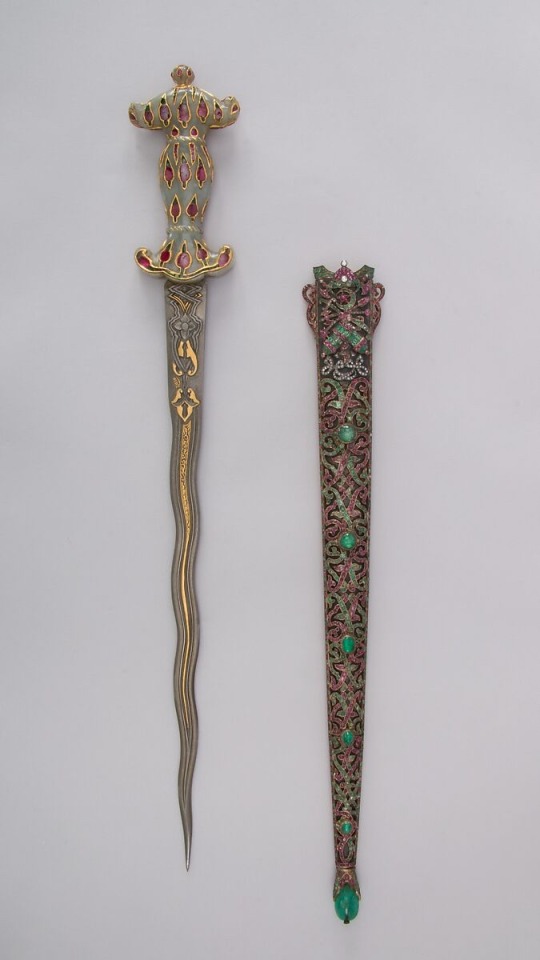
Dagger with Sheath | Turkish | 19th century | Met Museum
#daggers#dagger#blade#blades#knife#knives#sword#swords#knightcore#fantasy#turkish#turkey#ottoman empire
6K notes
·
View notes
Text

Ceramic flask, Ottoman Empire, circa 1530
from The British Museum
729 notes
·
View notes
Text

“Small Knife with Sheath” The Ottoman Empire, 18th century. Material: steel, silver, bone, horn, mother-of-pearl, enamel
8K notes
·
View notes
Photo
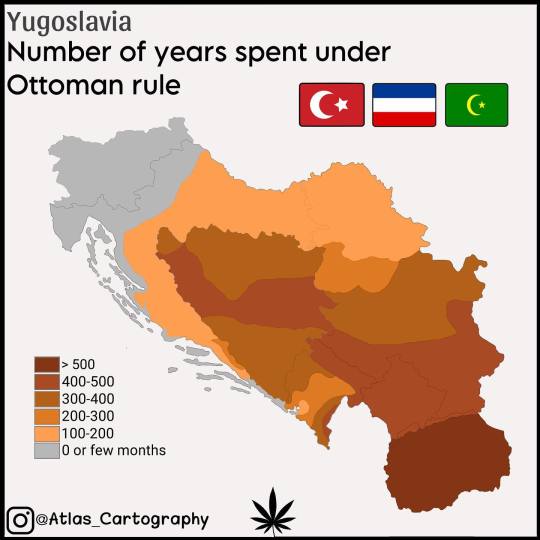
Number of years spent under Ottoman rule.
by atlas_cartography
671 notes
·
View notes
Text
THE SINS OF DESPINA HATUN
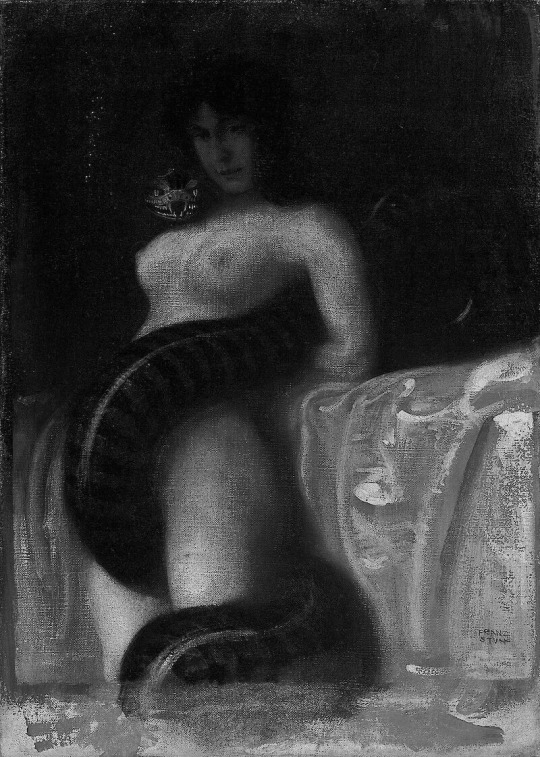
Since the 14th century, one woman has haunted the history of the Ottoman Empire and the very minds of their historians with her influence over a Sultan who suffered a hummiliating fate.
The only wife of a Sultan who has been the target of curses; Despina Hatun.
The reason for this great hatred of her has to do with the fact that she was influential and remain christian throughout her marriage. She was able to maitain the first and main place in the harem of her husband and to make him like her. A likeness that overtime grew into love and devotion.
Her wishes did not remain mere wishes, and for this reason the muslim associates of Sultan Yildirim Bayezid Han, as well as later Turksih historians resented her. Today most people remember her as “Bayezid’s great love”.
To Ottoman sources she was a fatal woman who lured their Sultan into sin. It can be concluded from that amount of hatred that she was allowed privileges and more power than was allowed for a foreign wife of a Sultan, or an imperial wife in general.

SHE MADE THE SULTAN FALL FOR HER
"As for Yıldırım, let's say that he fell in love with the princess." - Necdet Sakaoğlu. Bu Mülkün Kadın Sultanları, pg 83
"Throughout his life he was devoted to Despina, and his brother-in-law Stephen in turn was a devoted and steadfast friend." - Herbert Gibbons. The Foundation of the Ottoman Empire
According to Chalkokondyles, when Bayazit's favorite wife, Lazareva [daughter], whom he took everywhere with him into battle, was captured and handed over to Tamerlane, he ordered that wine be served to him there, in front of her husband. The enraged Bayazit told Tamerlane that what he was doing was not worthy of his father and mother. - Две српске султаније : Оливера Лазаревић (1373-1444), Мара Бранковић (1418-1487), pg 107
"When the latter's wife, the daughter of Lazar, whom he loved more than any of the others, had been taken away, and Timur was taking her around in the camp with him, he made her pour his wine in front of Bayezid, her husband." - Laonikos Chalkokondyles
"He kept her close – she accompanied him everywhere - he appeared unable to part from her. She was the one person, who influenced him most and was of course blamed by the Ottoman chroniclers for the fall of Beyazid’s empire into the hands of Timur. They considered the young sultan totally captivated by her."- Anna Buxton. The European Sultanas of the Ottoman Empire
It is widely understood that throughout their marriage Despina and Bayezid shared a devoted sentiment-perhaps more on his part-despite the circumstances that brought them together. The couple had similar interests such as politics, wine, partying, European customs, conversations and according to historians found constant erotic pleasure with each other. Though all of these cited interests might just be Ottoman historians attempts to depict this woman as deceitful.
" The sexually robust woman – she satisfies all his desires- but remains a Christian." - Richard Franz Kreutel performs a service to Ottoman polemic.
It is said that for some days, Bayezid remained in Despina's chamber and completely forgot about state affairs.
Olivera (Despina Hatun) is accused by Ottoman historians of using her charms and beauty to lure Bayezid to her. This seems highly untrue as Bayezid's harem is labeled as being filled with "forbidden beauties." He could have set his sight on another with more charm and beauty, and in fact he did, but still remained devoted to Despina.
It seems they use her beauty and political influence only as a means to label her as a Femme Fatale who is cunning, power-hungry and worst even, an infidel. Yet, when we look at foreign sources about the personality of Despina Hatun, she is describe as being gentle and flowery.

SHE WAS ALLOWED POLITICAL INFLUENCE
According to Dr. Zeljko Fajfric in his work "Srpske kraljice i princeze," released in 2007, no sultana before Olivera, who did not convert to Islam, managed to become so influential.
Yet something that is enough to critize him on is that he only puts this influence of hers to be due to her charms and beauty, yet again unintentionally labeling her as a femme fatale.
If beauty was all it took to have political influence, dozens more like her would have succeeded in that aspect, but she remains the only wife of Bayezid who had significant importance on politics.
Either Bayezid often sought after her opinion in matters of state or he took her as an advisor which might be the reason she was often with him, but no, a good scent, a soft spoken voice, long hair or enchanting glances will work, at least not for very long, even for a man prone to pleasure like Bayezi, and as we know Despina's political influence grew more with time than it decline.
A few things that are attributed to her council...
I: She helped accelerate the transfer of Prince Lazar's body back to Serbia.
II: She freed and paid ransoms for enslaved christians with the help of her brother; Stefan.

SHE BROUGHT DEBAUCHERY TO THE OTTOMAN COURT
Despina is often blamed for having introduced wine at the Ottoman court.
This sin that Bayezid's partook in can not be credited to Despina because he was already throwing such feasting assemblies ever since his princehood. Him and Despina married in 1390, he was well too familiar with wine and pleasure prior to their marriage.
Despina, later on, might have organized such festivities for him.
" Wine and kebab assembly was established. The infidel's daughter came and toasted Ali Pasha. The lady said, see the moment." - Aşıkpaşazade.
Still it is highly unlikely that Despina, who comes from a culture where married women do not speak in the presence of men would even partake in such assemblies filled with drunk men.
What is more likely is that she organized her own wine assemblies in the harem, with the presence of other women, but the chances of her doing such a thing as drinking in the presence of men is highly unlikely.
She might have even brought wine and so called debauchery to the once "pious" court of the harem, but as for the men; who take up the majority parties in politics and war, they were already familiar with the beverage.
#Bayezid#Sultan#Yildirim#Bayezid The Thunderbolt#SultanBayezid#Sultan Bayezid#Olivera Despina Hatun#Despina Hatun#DespinaHatun#Mileva Olivera Lazarević#medieval#middle ages#ottoman empire#Ottoman#Maria Hatun#lazarevicdynasty#Lazarevic Dynasty#Ottoman Dynasty#Maria Olivera Lazarevic#Domina Despina#yildirim bayezid#Ottoman Poetry#Ibn Kemal#15th century#16th century#Lazarevic dynasty#Serbia#Turkey#Osmanli#despinahatun
275 notes
·
View notes
Photo

“𝔖𝔪𝔞𝔩𝔩 𝔎𝔫𝔦𝔣𝔢 𝔴𝔦𝔱𝔥 𝔖𝔥𝔢𝔞𝔱𝔥” 𝔗𝔥𝔢 𝔒𝔱𝔱𝔬𝔪𝔞𝔫 𝔈𝔪𝔭𝔦𝔯𝔢, յՑ𝔱𝔥 𝔠𝔢𝔫𝔱𝔲𝔯𝔶
#knife#antique#ottoman empire#18th century#steel#sheath#ottoman#details#esoterique#esoteric aesthetic#gypsy#gypsy aesthetic
4K notes
·
View notes
Text
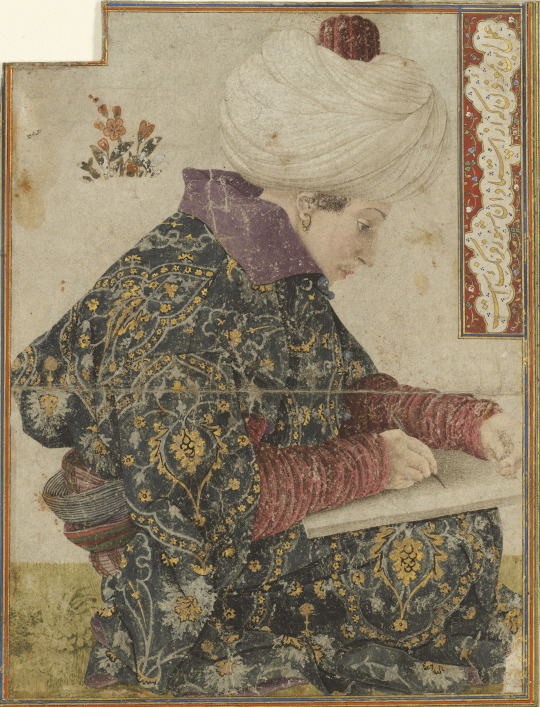
Seated Scribe, variously attributed to Gentile Bellini or Costanzo da Ferrara, 1479-81
#art#art history#Gentile Bellini#Costanzo da Ferrara#drawing#portrait#Orientalism#Orientalist art#Ottoman Empire#Renaissance#Renaissance art#Italian Renaissance#Quattrocento#Italian art#15th century art#pen and ink#watercolor#Isabella Stewart Gardner Museum
772 notes
·
View notes
Text

Maxime Delcambre - Assassin's Creed (2019)
#2019#art#illustration#gaming#Maxime Delcambre#Assassin's Creed#Revelations#Ezio#Ezio Auditore da Firenze#Altair#Altair ibn La'Ahad#Constantinople#Istanbul#Ottoman Empire#Byzantium#Byzantine Empire
649 notes
·
View notes
Text


Elia and Ashara WIP for #SixCharacters ship challenge
commissionated by @MaraHasBooks
#illustration#artists on tumblr#chiara cognigni's art#chiara's art#digital illustration#digital art#fanart#art#asoiaf fanart#asoiaf#a song of ice and fire#ship#couple#romance#sapphic#elia martell#ashara dayne#house martell#house dayne#ottoman empire#magnificent century#hurrem sultan#time lapse#art challenge#elia x ashara#valyrianscrolls
213 notes
·
View notes
Text
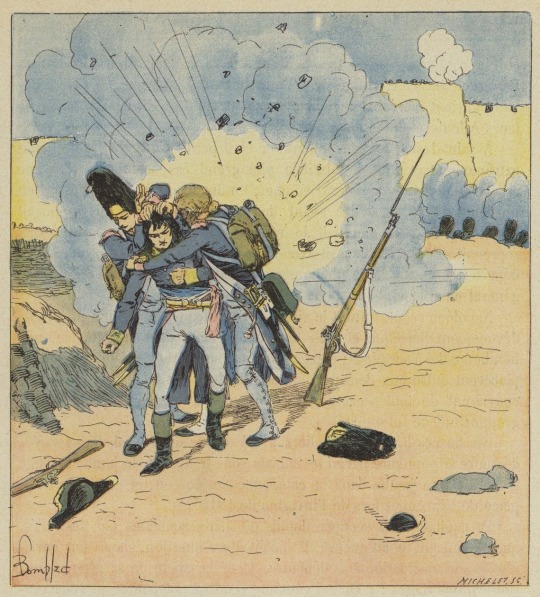
At St Jean d'Acre, the grenadiers Daumesnil and Souchon cover Bonaparte with their bodies to protect him from the shrapnel of a bomb blast.
by Louis Charles Bombled
#napoléon#napoleon#bonaparte#napoleon bonaparte#napoléon bonaparte#acre#art#siege of acre#louis charles bombled#pierre daumesnil#claude souchon de chanron#grenadier#grenadiers#french revolutionary wars#history#france#french#europe#european#middle east#saint jean d'acre#st jean d'acre#ottoman empire#ottoman#french republic#siege
127 notes
·
View notes
Text
Palestinian History Between Great Powers - Part 1
From Bronze Age to Ottoman Palestine
I started writing this article months ago but as it deserves proper research, it took me a long while, and at one point I started questioning is this helpful anymore. I thought it's obvious at this point to anyone not willfully ignorant that what we are seeing in real time is a genocide, and I'm not going to convince those who are willfully ignorant. I decided to finish it anyway since I do feel obligation to do something and maybe providing some accessible historical context is what I'm capable of doing. Even if I probably won't change any hearts and minds, I think the least we can do is not forget Palestinians and fall into apathy. And at the very least more understanding of the situation is always better even when we already oppose this genocide.
This is quite out of my area of focus, so I will be doing more of a general overview of the history and link in depth sources by more knowledgeable people than try to become an expert on this. My purpose is to offer an accessible starting point for the history of Palestine to help people put historical and current events into their proper context. I don't think the occupation and genocide in Palestine pose complex moral questions - it's pretty simple in my opinion that genocide, apartheid and colonialism are wrong and need to stop for peace to be possible - but the history is complex and it's understanding needs quite a lot of background. I will do my best to represent the complexity accurately and fairly while keeping this concise. Since there is a lot of history, even if this is very general overview, it's still very long, so I did need to cut this in two parts. First part will be covering everything to the beginning of WW1, second part the British Mandate period and Israel period.
Bibliography
I'm linking my sources and further reading here so it's easy to check some specific resources even if you don't want to/have time to read 5 000 years of history right now. Because there's so much misinformation and propaganda, I read as much as I could from academic sources, linked at the top here. They are really interesting and delve deeply into specific subjects so I do recommend checking out anything that peaks your interest (Sci-Hub is your friend against paywalled papers and in JSTOR you can make a free account to access most papers). Some of them I didn't really end up using, but I still linked them here since they provide some additional context that wouldn't fit in this overview. At the end there's some accessible resources (youtube videos, podcasts etc.) which are relevant and I think good.
Pre-Ottoman Era
On The Problem of Reconstructing Pre-Hellenistic Israelite (Palestinian) History - Critique of Biblical historical narratives
Canaanites and Philistines
Archaeological Sources for the History of Palestine: Between Large Forces: Palestine in the Hellenistic Period - Everyday life in Hellenistic Palestine
Ottoman Era
Rediscovering Ottoman Palestine: Writing Palestinians into History - Critique of politics of Ottoman Palestine historiography
The Peasantry of Late Ottoman Palestine
Consequences of the Ottoman Land Law: Agrarian and Privatization Processes in Palestine, 1858–1918
The route from informal peasant landownership to formal tenancy and eviction in Palestine, 1800s–1947
The Ottoman Empire, Zionism, and the Question of Palestine (1880–1908)
Origins of Zionism
Christian Zionism and Victorian Culture
Zionism and Imperialism: The Historical Origins
The Non-Jewish Origin of Zionism
Zionism and Its Jewish "Assimilationist" Critics (1897-1948)
The Jewish-Ottoman Land Company: Herzl's Blueprint for the Colonization of Palestine
Books
Boundaries and Baraka - Chapter II of Muslims and Others in Sacred Space - Local syncretic religious beliefs of Muslim and Christian Arabs in Palestine
Further "reading"
Israelis Are Not 'Indigenous' (and other ridiculous pro-Israel arguments) - Properly cited youtube video on settler colonialism of Zionism (Indigenous is defined here in postcolonialist way, in contrast with the colonialist, the video doesn't argue that diaspora Jews didn't originate from the Palestine area)
Gaza: A Clear Case of Genocide - Detailed Legal Analysis - Youtube video detailing current evidence on the ongoing genocide and assessing them through international law
What the Netanyahu Family Did To Palestine: Part 1 , Part 2 - Two part podcast episode of Behind the Bastards about Israel's history and Netanyahu Family's involvement in it with an expert quest
History of Israeli/Palestinian conflict since 1799 - Timeline of Palestinian history by Al Jazeera with documentaries produced by Al Jazeera for most of the entries in the timeline
Ancient Era (33th-4th century BCE)
Palestine's location in the fertile crescent, the connecting land between Africa and Asia and the strip of land between Mediterranean and Red Sea means since the earliest emergence of civilizations it has been in the middle of great powers. Thorough it's history it has been conquered many, many times for it's strategic value. Despite the changing rulers and migrating groups there has been a continuous history history of a people, which has changed, split and evolved, but not fully disappeared or replaced at any point, which is quite rare of a history spanning thousands of years.
Speakers of Semitic languages are the first recorded inhabitants of Palestine. At least from Bronze Age (c. 3300-1200 BCE) onward they inhabited Levant, Arabian peninsula and Ethiopian highlands. Semitic languages belong in the Afroasiatic language group, which includes three other branches; ancient Egypt, Amazigh languages and Cushitic languages of African Horn. Most prominent theories of the origins of proto-Afroasiatic is in Levant, African side of Red Sea or Ethiopia. In the Bronze Age the Levant's Semitic speakers were called Canaanites and there was already urban settlements in Early Bronze Age. Egypt had been extending it's control over Canaan for a while and in Late Bronze Age, 1457 BCE, it took over Canaan. Gaza, which had had habitation for thousand years already, became the Egypt's administrative capital in Canaan. Canaan stayed as Egypt's province until the Late Bronze Age collapse c. 1200-1150 BCE, when Egypt started losing it's hold on Levant. Egypt eventually retreated from Canaan around 1100 BCE. The causes of Late Bronze Age collapse are unknown, but theories suggest some kind of environmental changes that caused destruction of cities and wide-spread mass migration all around the East Mediterranean Bronze Age civilizations.
Canaanites was not what most of the people called themselves, but rather what the surrounding empires, especially Egypt and Hittites in the north, called them. Philistines appear in Egyptian sources around the Late Bronze Age collapse as raiders against Egypt, who were likely populating southern parts of Canaan, the Palestine area. Several groups with mutually intelligble languages emerged after Egypt left the area: in Palestine area Philistines, Israelites, in Jordan are Ammonites, Moabites and Edomites, and in Lebanon area Canaanites, who were called by Phoenicians by Greeks. Israelites have been theorized to split from Philistines, possibly after Aegonean migrants during the Late Bronze Age collapse influenced the culture of the costal Philistine city states, and/or through Israelites development of monotheistic faith. During Iron Age these different groups descendant from Caananites had their own kingdoms. In the area of Palestine there was two Israelite kindgoms, Kingdom of Judah is the highlands of Judah, were Israelites likely originated, and Kindom of Israel or Samaria north to it, as well as Philistine city states in the coast around the area of current Gaza strip.
Earliest historical evidence of Israel is from mid 9th century BCE and of Judah from 7th century BCE, though Israelites as a group were mentioned earlier. It's entirely possible the kingdoms predate these mentions, but the archaeological evidence suggests likely not by much. Israel was conquered by the Neo-Assyrian empire in 722 BC, so it's entirely possible kingdom of Judah was created by retreating Israelites of the earlier kingdom. The remaining Israelites under Assyrian rule came to be known as Samaritans, marking also the split of Jewish faith into Judaism and Samaritanism. Neo-Assyrian lingua franca was Aramaic, a Semitic language from southwest Syria, which became the major spoken language in Samaria. Judah became a vassal state of Assyrians and later Babylonians. After a rebellion Babylonians fully conquered Judah in 586-587 BCE and exiled the rebels, though more recent historical study suggests it targeted the rebelling population and was not a mass exile. In 539 BCE Babylon and by extension Judah was conquered by Persian Achaemenid empire, which allowed the exiles to return and rule Judah as their vassals. Persia also conquered Samaria and Philistines. Aramaic was also the official language of the both Neo-Babylonian and Achaemenid empires and replaces Old Hebrew as spoken language in Judah too, though Old Hebrew continued to be written language of religious scripture and is known today as Biblical Hebrew. Otherwise in the Palestine area there were Edomites, who migrated to the southern parts of former Judah kingdom, and Qedarites, a nomadic Arabic tribal federation, in southern desert parts.
Biblical narratives tell this early history very differently, and for a long while, those were used as historical texts, but more recent historical study has cast a doubt on their usefulness in historical inquiry. Even more recent archaeological DNA studies (like this and this) have supported the historical narratives constructed from primary historical texts.
Antique Era (4th century BCE - 7th century CE)
Under Persian rule the people in the Palestine area had a relative amount of autonomy, which lasted about 200 years. In the 330s BCE Macedonians conquered Levant along with a lot of other places. The Macedonian empire broke down quickly after the death of Alexander the Great, and Levant was left under the control of the Seleucid empire, which included most of the Asian parts of the Macedonian empire. During this time the whole Palestine area was heavily Hellenized. In the 170s BCE the Seleucian emperor started a repression campaign against the Jewish religion, which led to a Maccabean Revolt in Judea, lasting from 167-160 BCE until the Seleucids were able to defeat the rebels. It started with guerilla violence in the countryside but evolved into a small civil war. Defeat of the rebelling Maccabees didn't curb the discontent and by 134 BCE Maccabees managed to take Judea and establish the Hasmonean dynasty. The dynasty ruled semi-autonomously under the Seleucian empire until it started disintegrating around 110 BCE, and Judea gained more independence and began to conquer the neighbouring areas. At most they controlled Samaria, Galilee, areas around Galilean Sea, Dead Sea and Jordan River between them, Idumea (formerly Kingdom of Edom) and Philistine city states. During the Hasmonean dynasty Judaism spread to some of the other Semitic peoples under their rule. It didn’t take long for the rising power of the Roman Republic to make Judea into their client state in 63 BCE. Next three decades the Roman Republic and Parthian Empire would fight over control of Judea, which ended by Rome gaining control and disposing of the Hasmonean dynasty from power. It was a client state until 6 CE Rome incorporated Judea proper, Samaria, Idumea and Philistine city states into the province of Judea.
The Jewish population was very much discontent under Roman rule and revolted frequently through the first century or so. It led to waves of Jewish migration around the Mediterranean area, which would eventually lead to the formation of European and North-African Jewish groups. The Roman emperor’s decision to build a Roman colony into Jerusalem, which they destroyed along with Second Temple while squashing the previous revolt, provoked a large-scale armed uprising from 132-136 among Judean Jews, which Rome suppressed brutally. Jerusalem was destroyed again, Jews and Christians were banned from there, and a lot of Judean Jews were killed, displaced and enslaved. Rome also suffered high losses. Jews and Christians hadn’t yet fully separated into different faiths yet, but this strained their relations as Christians hadn’t supported the uprising. Galilee and Judea was joined into one province, Syria Palaestina. Galilean Jews hadn’t participated in the revolt and had therefore survived it unscathed, so Galilee became the Jewish heartland. During the Constantine dynasty, in the first half of the 4th century, when Christianity was the Roman state religion, Jerusalem was rebuilt as very Christianized. After the Constantine dynasty the Jewish relations with Rome were briefly improved by a sympathetic emperor, until Justinian came into power in 527 and began authoritarian religious oppression of all non-Christians, casting the whole area into chaos. Samaritans rebelled repeatedly and were almost fully wiped out, while Jews joined forces with several foreign powers in an attempt to destabilize Byzantium rule. By 636 the first Muslim Caliphate emerged as victors over the control of Palestine.
Muslim Period and Crusades (636-1516)
For more than 300 years under the rule of Muslim Caliphate, Palestine saw a much more peaceful period, with relative freedom and economic prosperity. Christianity continued to be the majority religion and Christians, Jews and usually Samaritans were considered People of the Book, who were guaranteed religious freedom. Non-muslims though had to pay taxes and depending on the caliph had more or less restrictions posed upon them. The position of Samaritans as People of the Book was unstable and at points they were persecuted. For the position of Jews it was a marked improvement, and after the expulsion of Jews from Jerusalem by Rome in the 2nd century, they were finally allowed to return. Jerusalem became a religious center for the Muslims too, as it was considered the third most holy place of Islam. Cities, especially Jerusalem, saw Arab immigration. The rural agricultural population was mostly Aramaic speaking, though even while Palestinian Arabs had mostly been bedouins in the southern deserts, there were few Arabic villages from the Roman era. People of the Book were protected from forced conversions, but over time conversions among the Christian population slowly increased, until Islam became the majority religion. Cities became Arabicized and slowly Arabic (also Semitic language) replaced Aramaic as the majority language. Towards the end of the first millennium persecution of Christianity increased with the threat of Byzantium.
In 970 a competing dynasty, Fatimids, conquered Palestine beginning a new era of continuous warfare and conquest by foreign powers. In the beginning of the new millennium Palestine was conquered by the Turco-Persian Seljuk empire for a couple of decades, recaptured by Fatimids for only a year, until the Crusaders took Palestine in 1099. During the next two centuries Palestine exchanged hands several times between the Crusaders and the Egyptian Ayyubid Sultanate. After internal struggle the Ayyubid dynasty was overthrown by the mamluk military caste and them in lead, the Sultanate secured Palestine. First they repelled the invading Mongol empire in 1260 and by 1291 they had defeated the remnants of the Cusaders and their Kingdom of Jerusalem. The period was devastating to the Palestinian populations, cities and economic life. The Crusaders especially committed numerous massacres against non-Christians and under Muslim rule Christians were persecuted and forcibly converted. The next two centuries under the Mamluk Sultanate were peaceful and Christian and Jewish communities were afforded some self-governance and relatively high religious freedom for being recognised as People of the Book again. The state had a more contentious relationship with Christians as the wars with the Crusaders were still looming between Christians and Muslims, and at some points Christians faced persecution and forced conversions.
Ottoman Period (1516-1917)
The Ottoman Empire gained dominance in western Asia over the Mamluk Sultanate during the late 15th century and conquered Palestine in 1516. It became a great imperial power in Asia and Europe for two centuries and in the 18th century started a slow decline, eventually becoming the "Sick man of Europe". The Ottoman Empire was very decentralized and under it Palestine was at first ruled by three Palestinian families semi-autonomously. The Ottoman state didn’t pay much attention to economic development, as they considered it contrary to their chivalric culture, so they instead attracted foreign businesses with the capitulation system. Capitulations were treaties between Ottomans and a foreign power by which the citizens of that foreign power were under their jurisdiction inside Ottoman borders. This guaranteed safety and religious freedom for non-Muslim merchants and exempted them from any additional taxes applying to foreigners and non-Muslims, which encouraged them to build businesses in the Ottoman Empire. Ottomans also intentionally attracted European Jews, who faced persecution and pogroms, and had built effective international trade networks through the tight knit diaspora communities. Jews and Christians had quite well secured position in the empire as People of the Book, but Samaritans were persecuted after they had sided with the Mamluk Sultanate against Ottomans and later for being considered "pagans". City elites adopted Turkish culture, while in rural areas peasant villages and Bedouin clans remained Arabic. The rural areas were very much self-governing as both villages and Bedouin clans were fairly self-reliant with their own political structures. Villages consisted of clan-like family groups, hamulas, and the village lands were distributed between their collective ownership.
In the 19th century the Ottoman Empire was leaving behind European imperial powers in economic and military development. With the rise of the international capitalist markets, capitulation approach, which had worked well for the empire in previous centuries, was extended to markets as a very laissez faire economic policy. This did not lead to hoped economic growth however, but rather deindustrialization. The Ottoman Empire opened itself to markets it couldn’t compete in and its resources were then easy to exploit by stronger economies. The other powers, such as the European powers, avoided this by first cultivating strong national industries with protectionist policies, and then opened to international markets. The capitulation system also became a political liability the way it interacted with the protégé system. The Ottoman Empire had agreed to allow some European powers to give their protection over certain minority religious groups (mostly Christian groups) in the Empire, allowing members of those groups to claim citizenship of their protectorate nation. This had allowed those Ottoman citizens to claim the benefits of the capitulation system and cultivated trade and business for the Empire. In the 19th century the European powers, notably France, British Empire, Germany and Russia, turned their interests towards Levant which was important for their access to their colonial interests in Asia and Africa. They had a vested interest in the continuing power of the weakening Ottoman Empire, which they believed they could control through economic dominance and the protégé system. It became a competition on who could gain the most influence in the Ottoman Empire. In Palestine this led to a change in class dynamics. Christian protégés of European imperial powers were given tax exemptions from the increasing taxes, which were implemented to balance the national deposit, and better opportunities to gain wealth from international trade, turning the urban Christian Arabs into elite.
In 1832 Egypt invaded Palestine, marking a point of more rapid decline of Ottoman rule. Egypt attempted to “modernize” Palestine, which was considered backward, but Egypt's policies, especially conscription, were considered intrusive. The local self-ruling clans and families were resistant to outside powers and with their sway over the population, they rose to a popular uprising after two years of Egyptian rule. The suppression of the uprising devastated many villages and Egypt still failed to enforce order and halt violence. In 1840 Britain intervened, returning its control back to the Ottomans. They didn’t yet have capitulations with the Ottomans and were concerned over the other European powers gaining influence over the aging empire, so in return for their military assistance, they gained capitulations and named Jews and Protestants as their protégés in Levant. Palestine rapidly opened to the international markets with the increase in capitulations combined with the laissez faire fiscal policies of the empire, allowing European powers to turn Palestinian cities, especially in the coast, to centers of trade. In 1858 the Ottoman Empire also attempted to privatize land ownership to increase agricultural production and profitability in order to help with their financial troubles. Most Palestinian land was public land, but in practice owned informally by the villagers cultivating it. As long as they paid taxes, they couldn’t be evicted, which rarely happened in those cases either, and their rights to the land were hereditary. The land reform codified and formalized land ownership and removed barriers to non-villagers gaining ownership of peasant land, laying groundwork for commodifying land. The Ottoman Empire also allowed foreigners to purchase private land. This didn’t immediately lead to large-scale transfer of land ownership, but increasing taxes impoverishing the peasantry and indebting them transferred land from its cultivators to urban absentee landlords. Peasants started to turn into landless tenants and a new type of large estates were established.
Birth of Zionism
The British pushed for more control over Levant, since they wanted to secure their access to India and their colonial ventures in Africa. They didn’t have much interest in colonizing Levant themselves, which is why they were interested in backing the Ottoman Empire and gaining stronger control over it via European Jewish immigrants. European Jews had been immigrating to Palestine in small numbers for a while for religious reasons, to escape persecution and to take advantage of the economic opportunities offered by the Ottoman Empire. The British though also had religious interests in supporting Jewish migration to Palestine. Since the early 19th century, there had been a growing religious movement of Christian Zionism, who sought to restore Jews into Palestine and then convert them to Christianity to cause the second coming of Jesus and the end times. As you do. They were considered fanatics, even lunatics, for their literal interpretations of prophecy, but they were enthusiastic imperialists and when they expressed the idea of restoration of Jewish Palestine in imperial terms, it gained popular acceptance in Britain. Some of the common talking points originating from Christian Zionism were Jews had the right to Palestinian land for Biblical reasons, the only way to not let the “underdeveloped” agrarian land go to waste was colonialism, and Jews would be a civilizing force in Palestine. While the end goal of Christian Zionists was conversion of Jews, they had Orientalist reverence for Jews, but among the wider imperialist support for these ideas there was in addition an explicitly antisemitic aspect. The imperialists' idea was that Britain, and Europe more broadly, could this way also get rid of the Jews.
The trouble was that at the time there was no wide interest at all among Jews to colonize Palestine. The Jews who were migrating there during the first half of the 19th century did so with all intentions of integrating to the Palestinian society. European Jews had since Enlightenment and the French Revolution gained unprecedented levels of social acceptance and equality (which still wasn’t very much), and liberal assimilationism had become the dominant ideology especially among Jewish elites. Assimilationist Jews considered Judaism a religious identity, not an ethnic one, and they rather identified with their nationality. In the latter half of 19th century Jewish socialism was contesting the liberal Jewish idea that antisemitism could be overcome with individualist approach and instead demanded structural change. During the century it became increasingly clear that the assimilationist approach couldn’t fix antisemitism as racial ideology and exclusionist ethnonationalism were gaining traction and fueling antisemitism, which culminated in the 1880s pogroms in Russia and 1894 Dreyfus Affair in France. These events certainly promoted socialist approach among many Jews, but the Jewish elite were certainly not interested in socialist solutions, where they would lose their elite status, even if for white Christians they were all second class citizens. So instead, like many elites facing the threat of socialism, they turned to nationalism. To the question of how to build a nation from a diverse diaspora, they found the answer from Christian Zionism. Jewish Zionism was distinctly secular, so while they did adopt many religious and biblical narratives and goals of Christian Zionism, they put them in nationalist terms. Their end goal was of course different from that of the millennialist Christians so Jewish Zionism was presented as a practical and rational alternative to utopian fanaticism, but they were still natural allies. Zionism was opposed in the European Jewish communities by both assimilationists and socialists, who both viewed it as countering the efforts of opposing antisemitism, which Zionists saw as an inherently impossible endeavor, and also by Orthodox Jews from a religious standpoint. Orthodox Jews denounced the secularization of the Promised Land, which according to them could only be bestowed by God and couldn’t be a state with secular power.
Before Zionism was fully formalized as a movement, there were proto-Zionist movements in Eastern-Europe as a direct response to the pogroms, with the goal of settling Eastern Jewish refugees to Palestine from 1881 forward. This is considered to be the start of the First Aliyah, the explicitly Zionist mass migrations to Palestine. The funding was secured from the European Jews, and with it the Zionists bought land from the absentee urban landlords with large estates and evicted the tenants in order to form Zionist colonies. This raised concern among Ottoman officials, who had become vary of the European exploitation of their capitulation system, which increased European influence with the immigration of European Jews. They were also concerned about the rising Arab nationalism in Palestine provoked by the European economic exploitation and even more pressingly the peasant displacement. The Ottoman Empire was already facing massive difficulties with nationalist movements in different parts of the empire, like in Armenia. They attempted to restrict Zionist land purchases with legal restrictions and failed.
The 1880s settling to Palestine was still unorganized and leaderless until Theodor Herzl, who is considered to be the founder of Zionism, joined Zionist ranks in mid-1890s and began formulating a colonialist venture in earnest. The British were supportive of the Zionist project, but as long as the Ottoman Empire was in charge of Palestine and the British could extend control over it, they weren’t interested in establishing such a state themselves. So the Zionist movement with Herzl in the lead turned to the Ottoman Empire in 1901. He envisioned the Zionist colonial project as a land company, modeled after the British and Dutch East Indian Companies, which would under imperial blessing operate fairly independently and govern over colonized land. The end goal was to build an ethnonationalist Jewish state and expel the native population. There were even dreams of Jewish empire that would colonize neighbouring countries, “civilize” them and bring them “prosperity”. To persuade the Sultan, Herz proposed to pay for the Ottoman Empire’s depts with European Jewish investments in exchange for allowing the Zionists to settle and govern Palestine. The Ottoman government was well aware of Zionist movement’s end goals and their alliances with European Imperialism, rejecting their proposals.
The Zionists evaded Ottoman restrictions anyway and continued to settle Palestine with British backing. European powers then pressured Ottomans to abolish those restrictions allowing a new wave of Zionist colonialism. The violence and pogroms in Russia had convinced some of the Eastern European Jewish socialists that fighting antisemitism was impossible, so they created Labor Zionism and used the “untouched land” to experiment with utopian socialist communes. In the process they displaced indigenous peasant hamulas, which had often for centuries farmed the land in communal ownership. Mass migration and eviction quickly provoked a predictable opposition in the Palestinian population and spread of Arab nationalist thought. This second wave of Aliyah ended at the First World War, which was also the end of the Ottoman Empire.
#history#palestine#palestinian genocide#palestinian history#colonization#colonial history#zionism#islamophobia#ottoman empire
162 notes
·
View notes
Note
How can you claim that Zionism was morally right, when what it was was European Jews coming to Palestine by the thousands and buying land, and when the Arabs realised what they were trying to do, i.e. steal land by making it sound reasonable to the British they should have the right to self determination, they rightfully tried to put a stop to it? If a lot of people come into a populated area and then ask for it to be given to them, since they’re so many, does it make it right for the people who were already there? And yeah, it’s true there was some Jewish presence there already but it wasn’t that much and it wasn’t them who started the Zionist movement. So how can you claim this was right?
You just said they were buying the land, and they were, so anyone thinking they were stealing it is already revealing major problems with racism, xenophobia, and conspiratorial thinking.
And by all means, let's talk about "immigrants" versus "people who were already there." From the 1850s to 1920s, the Ottoman Empire faced waves of refugee crises (the Crimean War, the Balkan Wars, the Russo-Turkish War, the Austro-Hungarian occupation of Bosnia-Herzegovina, and the beginning of World War 1) and decided to resettle OVER FIVE MILLION Muslim refugees all throughout its Mediterranean and Levant provinces. They sent hundreds of thousands of ex-Balkan and ex-Russian Muslims into southern Syria and what is now Jordan. These refugees founded the four largest cities in Jordan, including its capital Amman; of course, Jordan had been part of historic Palestine and the Palestine Mandate, and from the very first day they were able to govern themselves they passed laws banning any Jewish citizenship or inhabitation.
Am I supposed to see that as anything other than the most base, ladder-pulling racism? Do you really expect me to care that ex-Russian Muslims arriving in Jaffa in 1890 wanted to keep the ex-Polish Jews out in 1920? Between the Ottoman refugee resettlement and the large numbers of Arabs immigrating to benefit from new economic opportunities in a rapidly developing Palestine, the United Nations would later come to classify people as "refugees of the 1948 war" if they had been permanent inhabitants of Palestine any time before 1946. So many newcomers that just living there for two years made you a wizened, old-timer local, with a perfectly natural right to say nobody else can come in.
Where exactly are you starting history and whose immigration are you seeing as rightful, as just? In 1832, Egypt invaded Ottoman Palestine and established from nothing the new settler town of Abu Kabir; in 1948, Zionist militias depopulated it. Were the Arab settlers of Abu Kabir "indigenous" for the 116 years they were there? Because the major waves of Jewish immigration to Palestine started about 140 years ago....
There is no such thing as a legitimate history of the Levant that sees it as normal and morally / politically neutral for millions of Muslims to be resettled by various Muslim empires, but abnormal and dangerous for Jews to move in under their own initiative - usually out of desperation to save their lives - with no sponsoring empire at all.
Beyond that, if you took a few minutes to think of what your argument implies about the "Great Migration" of African-Americans to northern states in the early 20th century, or refugees crossing the Mexican border, and how white people responded to both, I think you would be less willing to make it, even anonymously.
159 notes
·
View notes
Text

Parcel gilt silver inkwell, Ottoman Empire, circa 1820
from Michael Backman Ltd.
334 notes
·
View notes
Text

Rabbi Yaakov Meir (center) with his son-in law and a Jewish kavass (bodyguard), Mandatory Palestine, 1939.
With the rise in status of foreign and non-Muslim dignitaries in the Holy Land in the 19th century, the ruling Ottomans assigned special bodyguards of all cultural backgrounds to protect diplomatic consuls, Christian patriarchs and chief rabbis. These guards, called “kavass” (the meaning in Ottoman Arabic is “archer” or “bowman”), were colorful characters, whose uniforms mimicked the style of the Ottoman military and, prestigious as they were, their presence became a status symbol. This tradition survived in the British Mandate and in the early years of the State of Israel. Some of the Christian counterparts can still be found in the Old City of Jerusalem, accompanying the church patriarchs who have not yet decided to relinquish this symbol of honor from the past.
92 notes
·
View notes
Photo

Railways in the Ottoman Balkans
by Yellowapple1000
89 notes
·
View notes